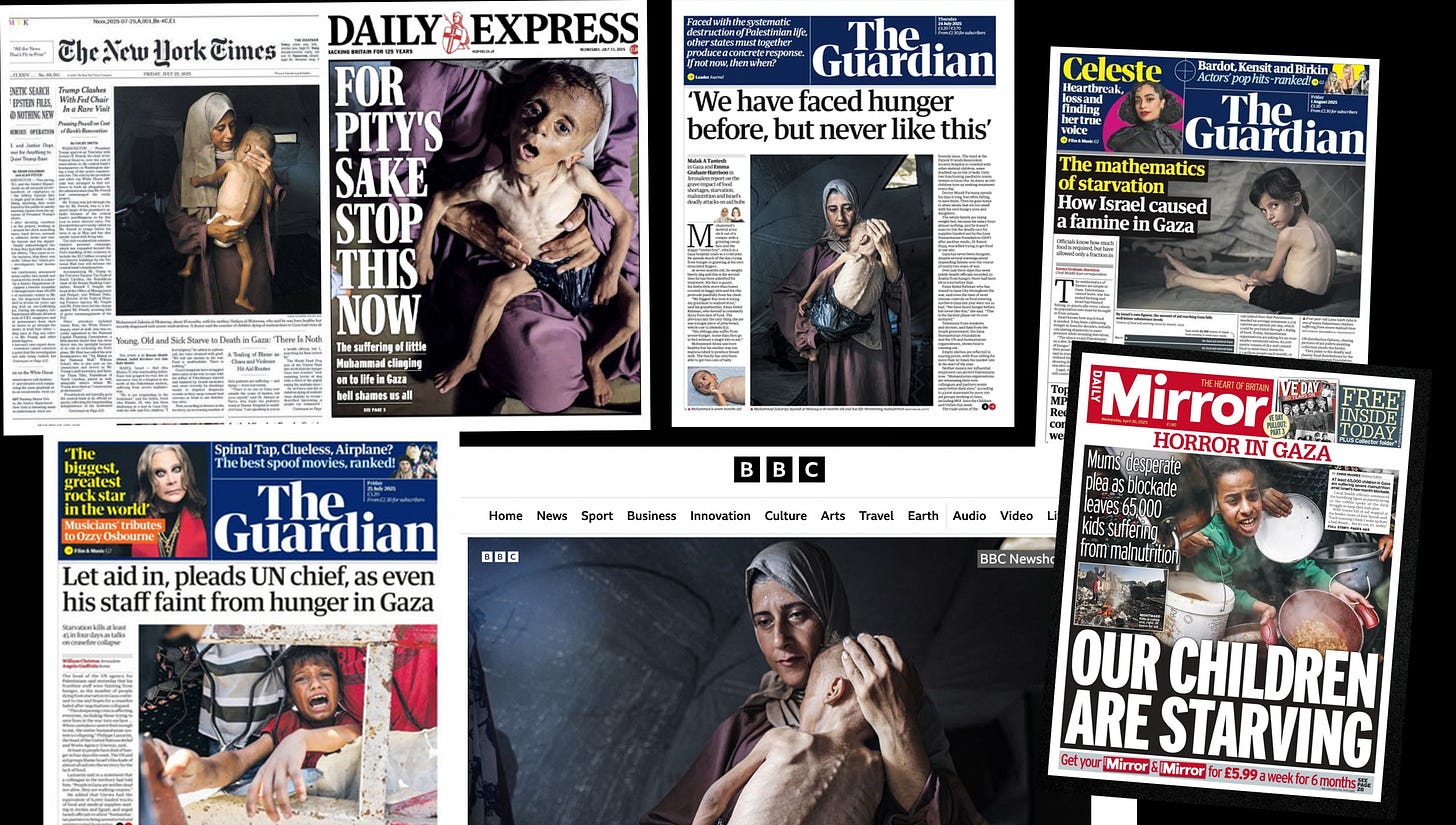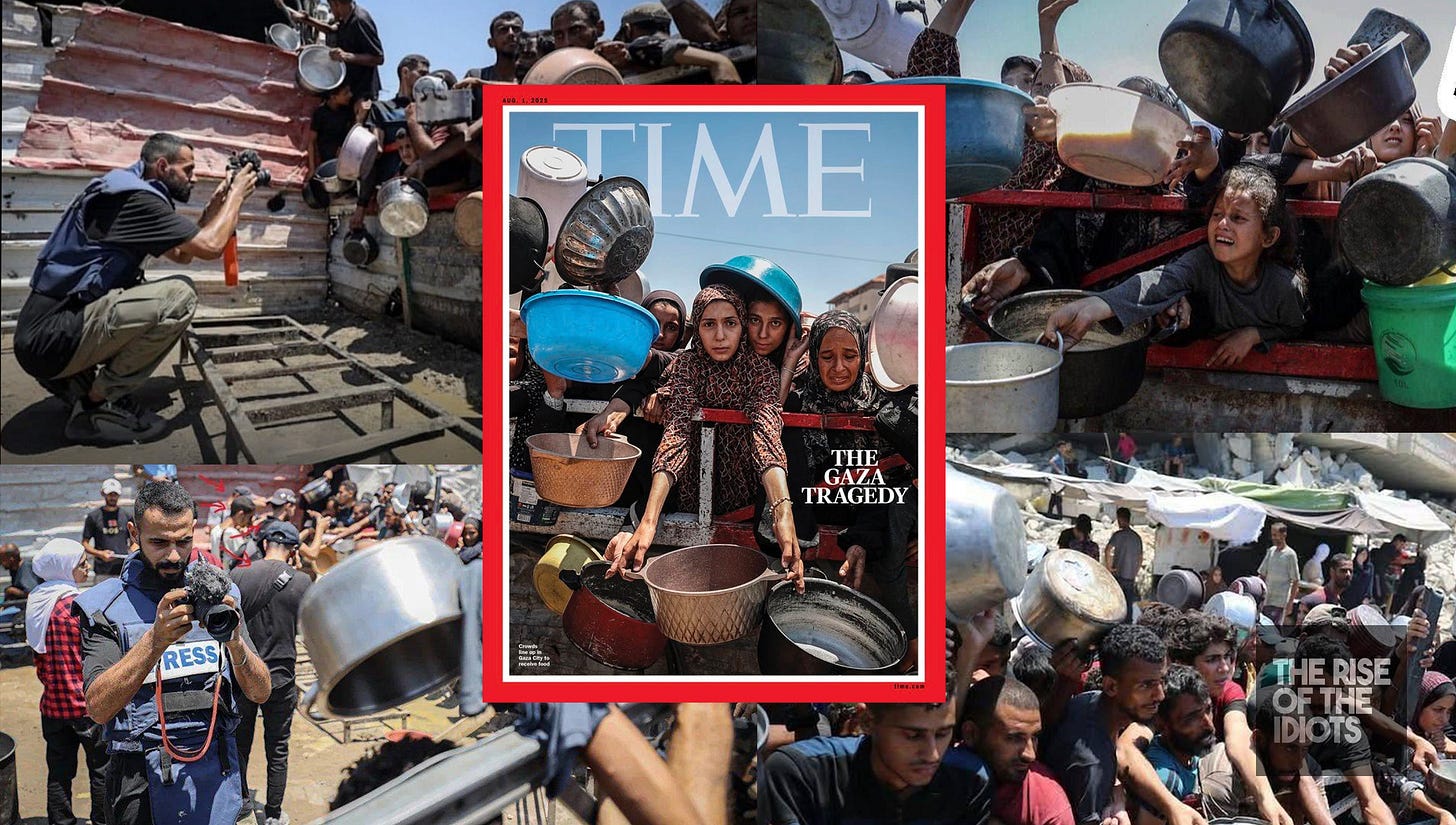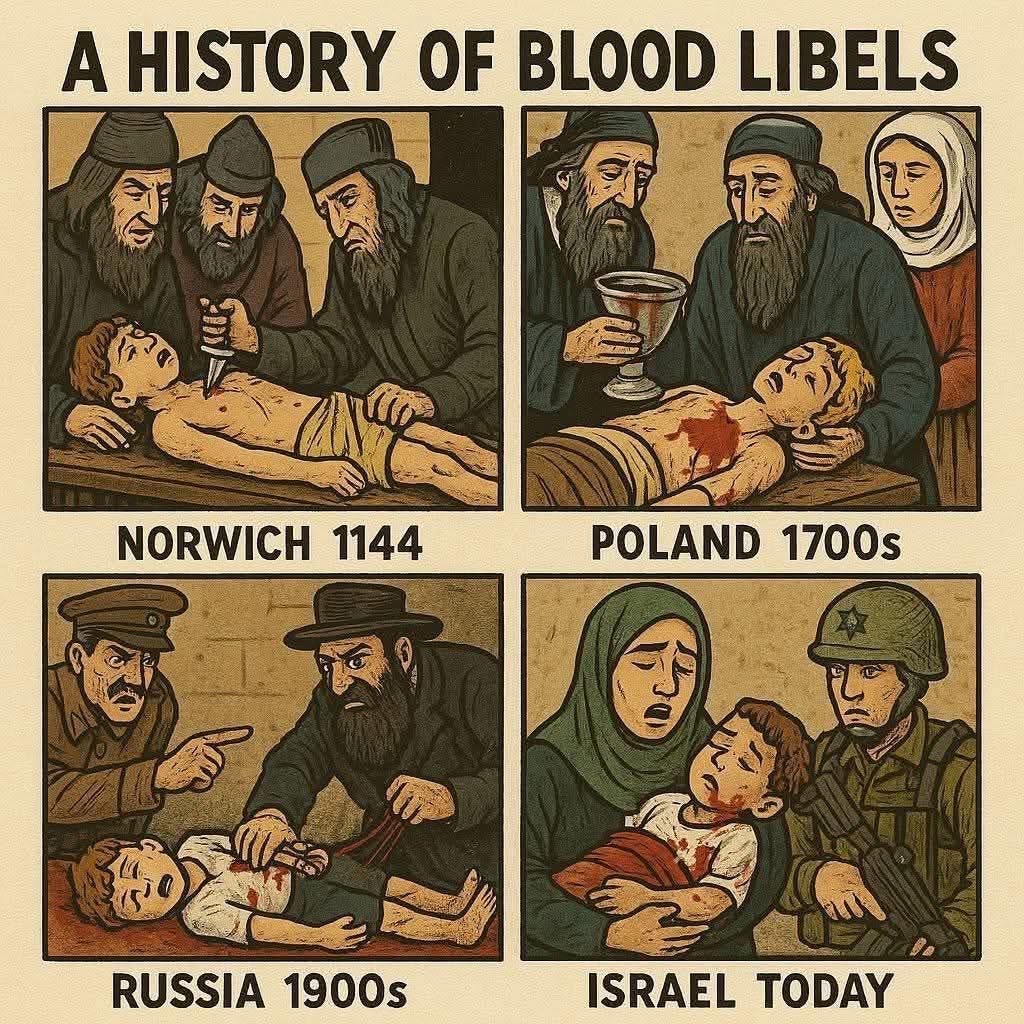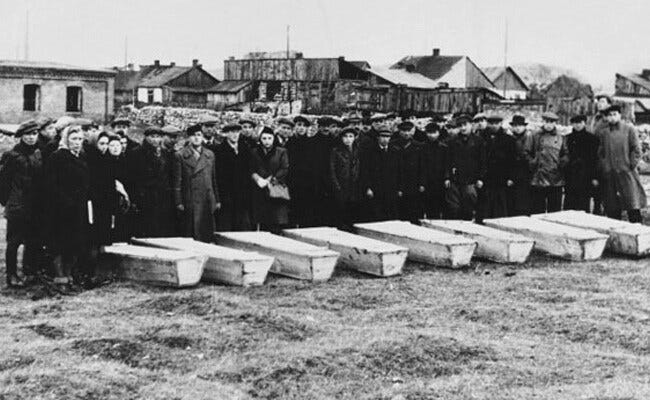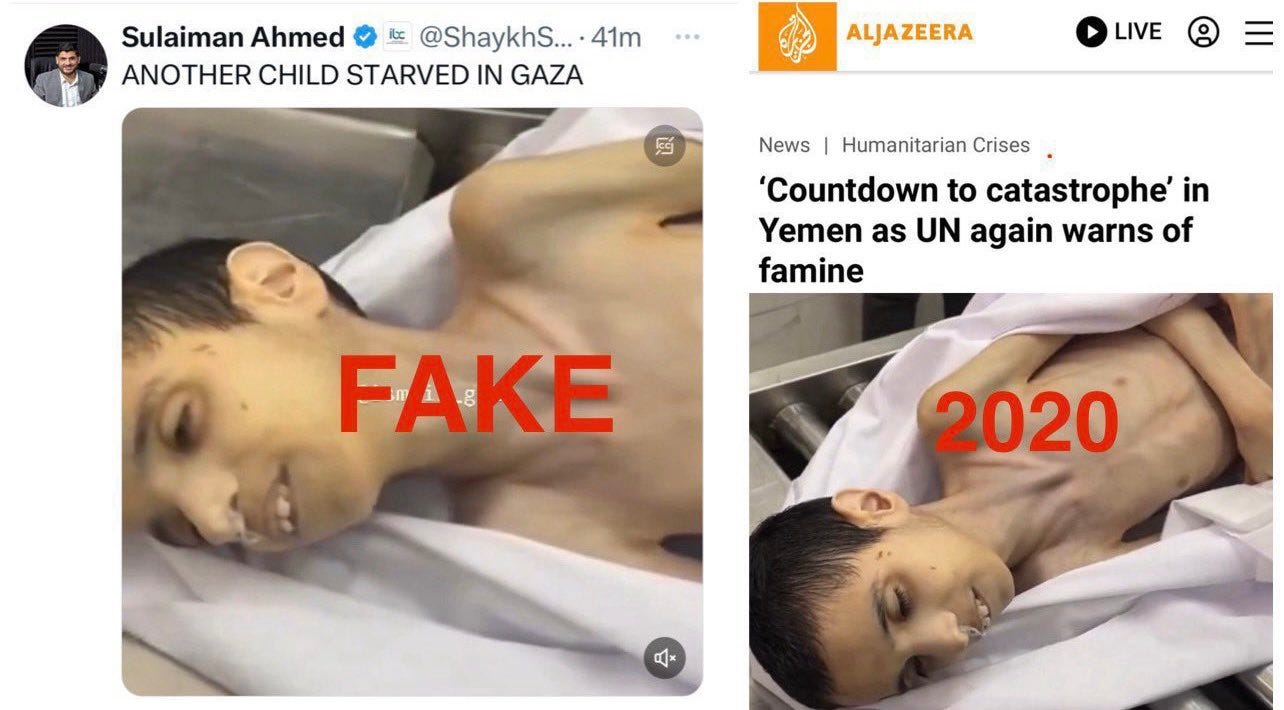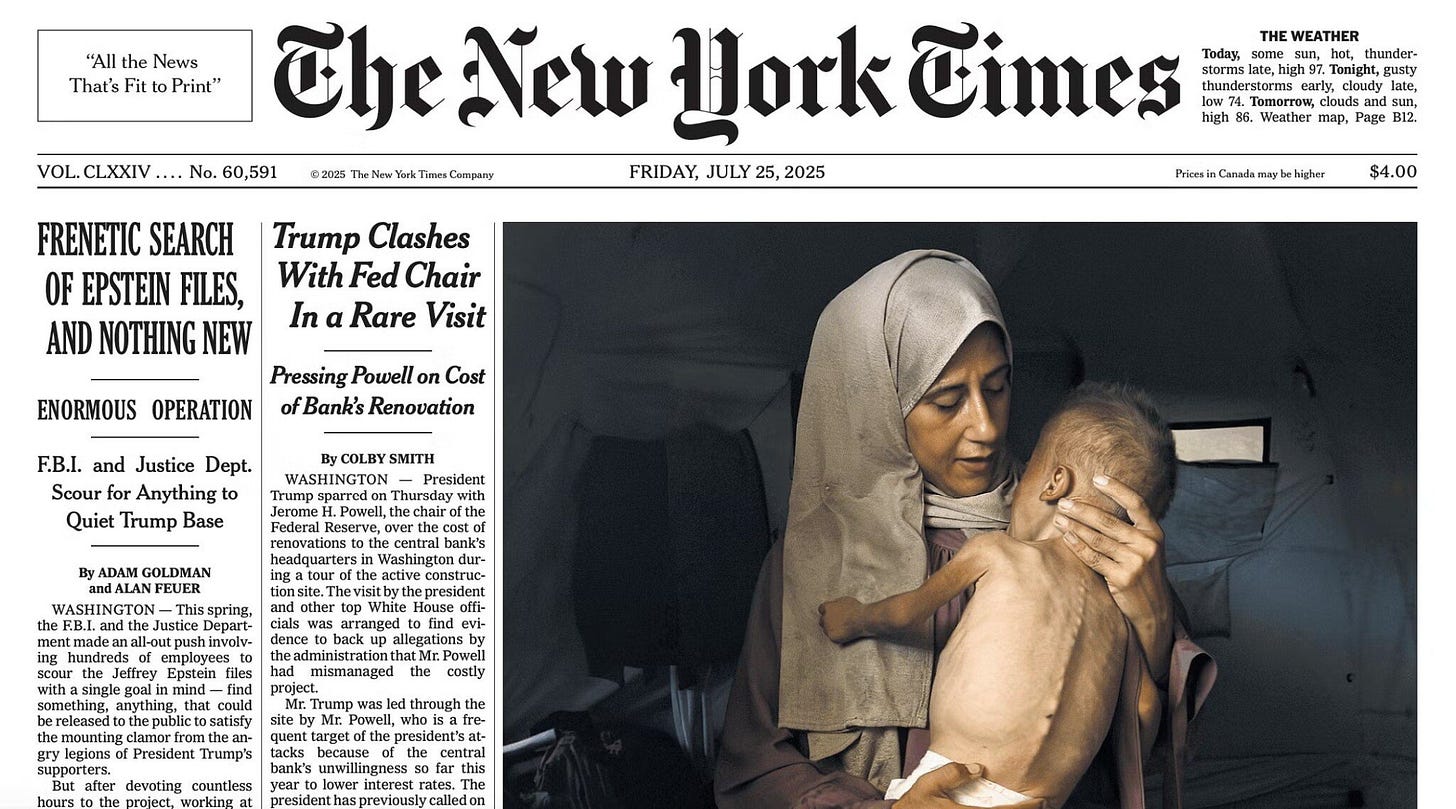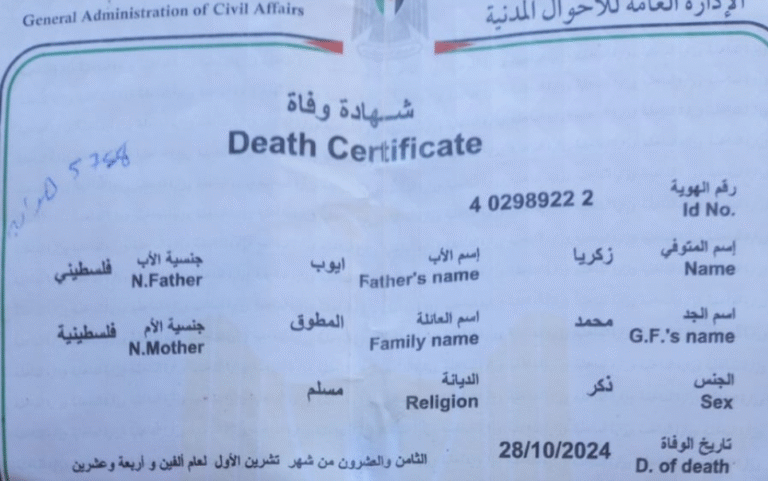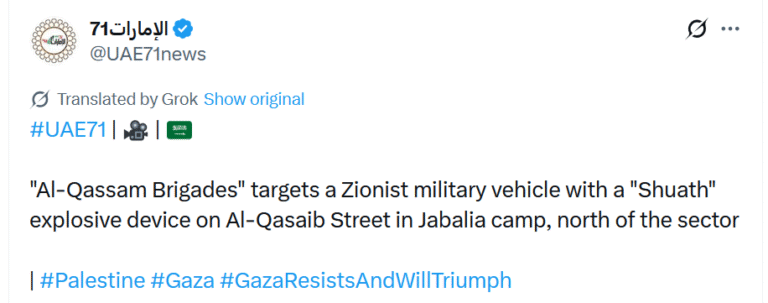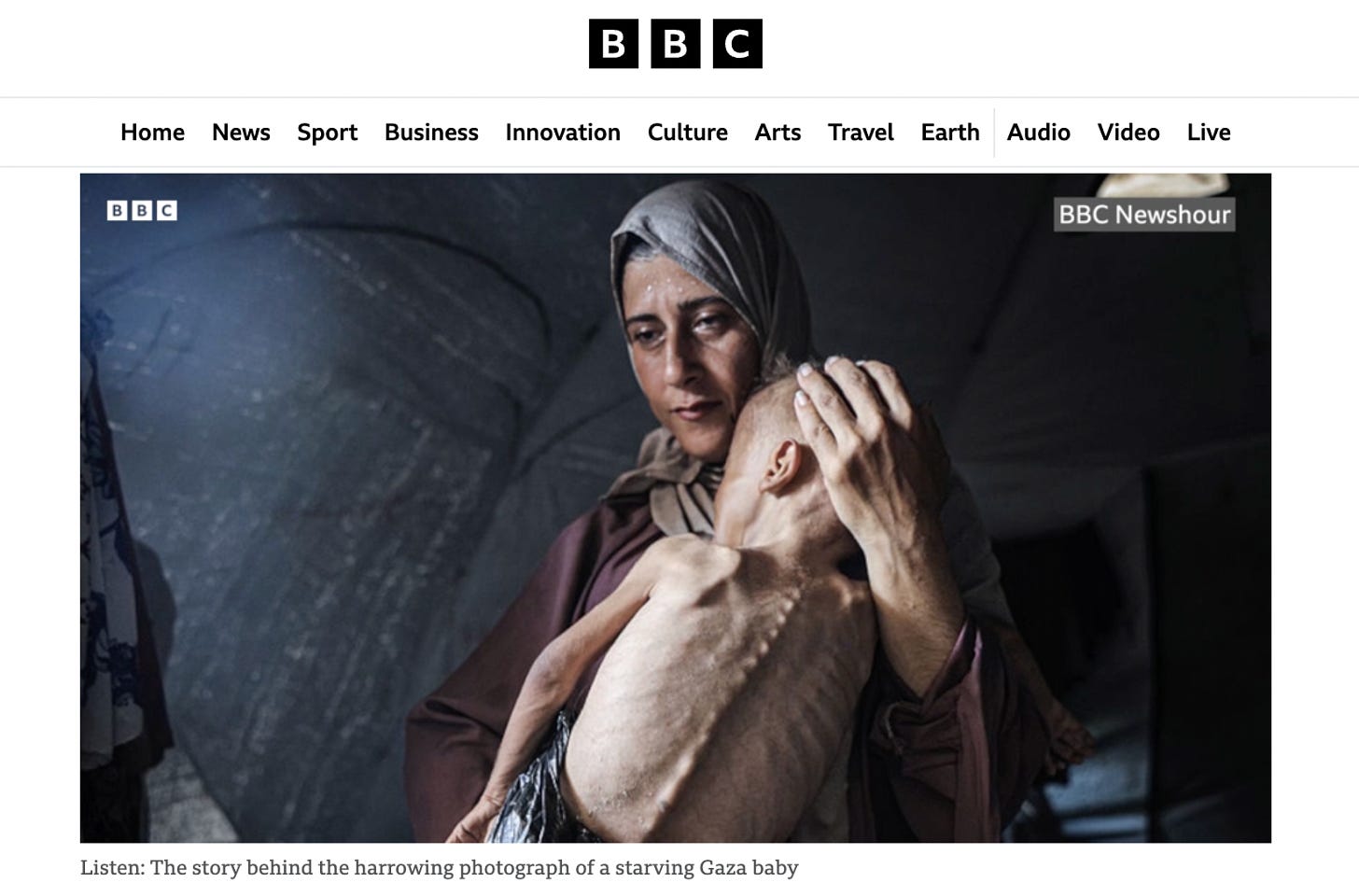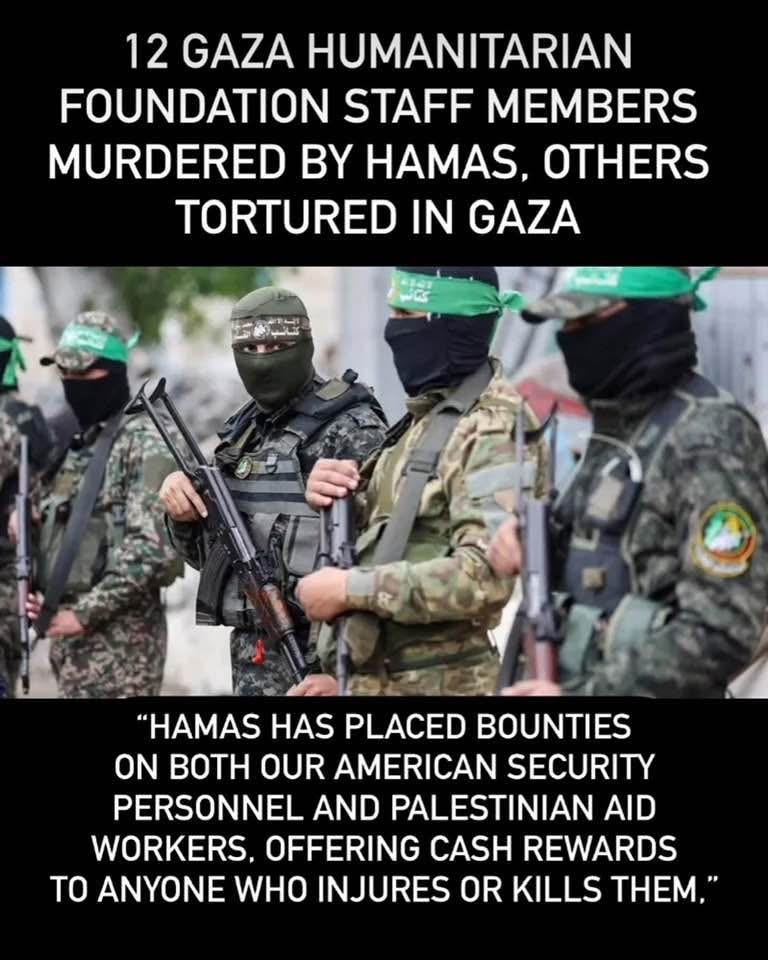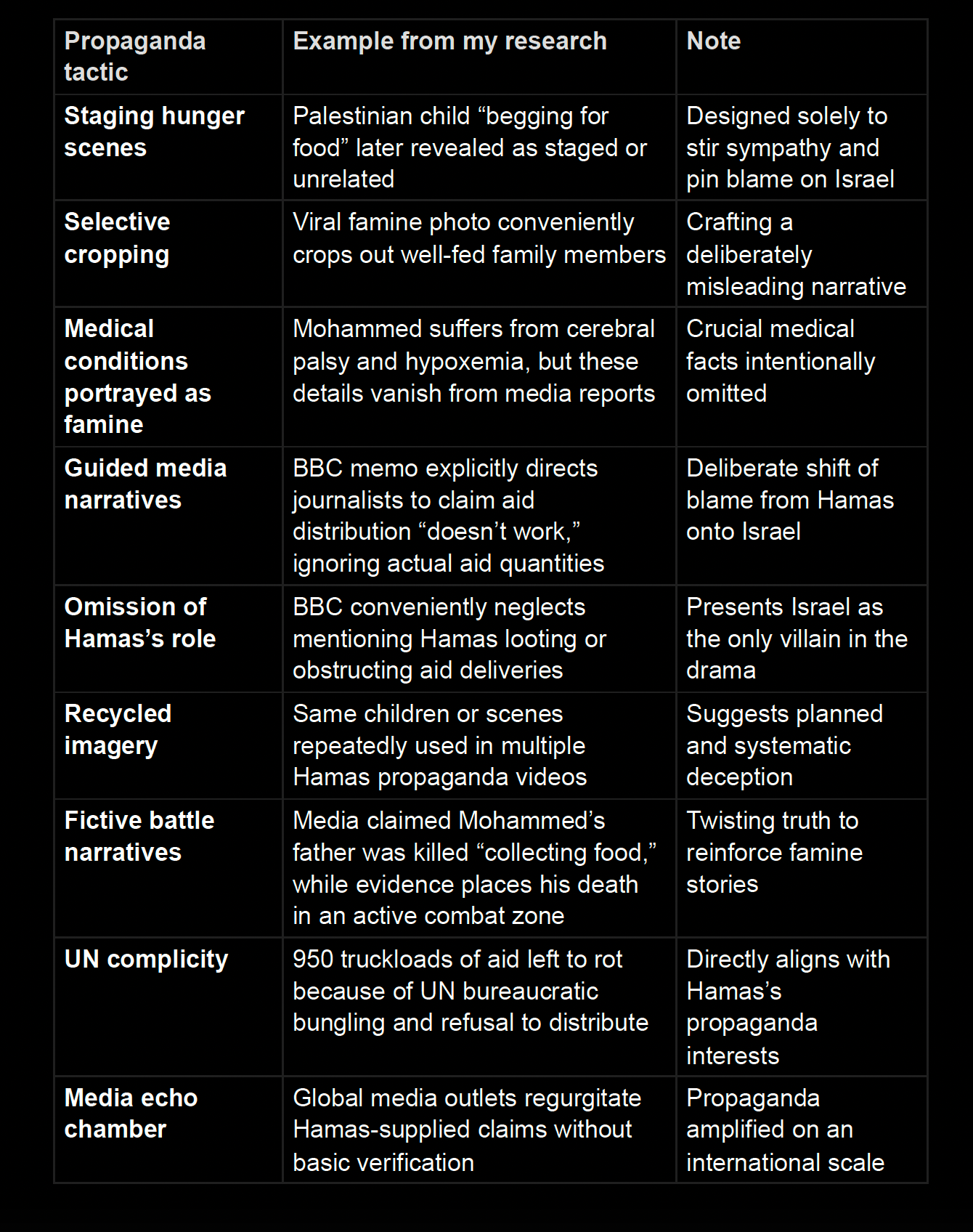Children of Gaza: Stolen Childhoods
Sponsored by Hamas’s “Public Enlightenment” & Propaganda Ministry
Introduction
For months we’ve been drenched in tear-jerker imagery—gaunt Gazan toddlers, endless aid trucks, wailing mothers—deployed to sell one storyline: Israel is deliberately starving Gaza. Legacy outlets have swallowed it whole. Time to tap the brakes. What you’re seeing isn’t organic journalism; it’s a propaganda machine that launders staged set-pieces and selective framing into “news,” amplified by credulous coverage from the BBC and a chorus of UN-adjacent bodies.
I’ve spent the last two years researching this for my documentary. The archive is now bigger than any single film can carry, so I’m rolling it out in stages: first these articles, then—over the next few weeks—a series of short YouTube docu-videos, each unpacking a specific case with on-camera receipts and additional examples I can’t fit on the page.
I’m no longer trying to awaken the masses — they’ve made it clear they’re not interested. Instead, I want to connect with like-minded people and inspire those who genuinely want to learn.
Every claim below is backed by primary footage, contemporaneous records, and media-monitoring analyses; citations and links sit with the relevant sections that follow.
Historical Parallels: Propaganda Then and Now
Before we dive head-first into today's manipulation, let's indulge in a quick history lesson—because, apparently, some tactics never get old. Remember Nazi Germany? Of course you do. They were masters of manipulating suffering to depict Jews as subhuman, blaming them for Germany's woes to legitimize atrocities. Did they care about relieving anyone’s pain? Not a chance—they just wanted a convenient scapegoat and a gullible audience. Fast forward to today, and according to my research, Hamas is dipping directly into that nauseating playbook. Videos abound showing Palestinian kids begging for crumbs, empty cooking pots dramatically overturned, and "injured" civilians miraculously cured between takes.
HonestReporting even exposed one child supposedly starving— only to find later clips of the same kid perfectly healthy, kicking a football around like he's auditioning for a Nike ad. And let's not forget the Oscar-worthy performances of adults faking wounds or kids lounging in hospital beds who later pop up playing tag outside. One gem involves Palestinians theatrically tying rocks to their stomachs to “ease hunger,” complete with off-camera giggles and director cues rather than genuine distress. Déjà vu much? Nazis weaponised misery to dehumanise their targets; Hamas is doing exactly the same thing to win sympathy from a gullible global audience.
Hamas’s appetite for drama doesn’t stop at hunger—it extends to fires, too. My intelligence sources on the “burned victims” saga have pointed out suspicious viral scenes at Al-Aqsa Martyrs Hospital (October 2024) and at a media tent in Khan Yunis (April 2025). These clips show supposed victims literally engulfed in flames, oddly calm as if they're standing in a mildly irritating drizzle rather than a blaze. Even stranger, bystanders casually whip out their smartphones instead of, oh I don’t know, maybe grabbing a bucket of water? Gazawood's experts think these fiery spectacles are straight from the playbook of cheap special effects—controlled, cinematic flames and suspiciously passive crowds. Same propaganda formula as the hunger clips: whip up some shock visuals, film them from every conceivable angle, and watch sympathetic media lap it up like cats at cream.
Though Hamas’s "famine" theatrics might seem fresh from a social media feed near you, they're actually recycling a much older story: the blood libel. Ah yes, everyone's least favourite medieval trope—the lovely tale about Jews ritualistically murdering Christian kids. This odious nonsense kicked off in merry old England in the 12th century with allegations Jews recreated the crucifixion using Christian children. By the Black Death, Jews were blamed for poisoning wells and desecrating communion hosts. King- endorsed legends like little Hugh of Lincoln even greased the wheels for England’s 1290 expulsion of its Jewish community.
This mythology persisted stubbornly through the centuries, tragically erupting again in 1946 with the Kielce pogrom in Poland, where forty-two Holocaust survivors returning home were butchered by former neighbours—spurred by whispers that Jews had abducted a local child.
Goebbels and his Nazi cronies loved nothing more than reviving these rancid tales of Jewish evil to justify mass persecution. Today, Hamas’s sob-stories of starving or injured Palestinian children aren't juste motional manipulation—they’re directly tapping into this ancient, hate-filled mythology. By weaponising innocent faces, Hamas rekindles a blood-libel narrative that historically tends to end in massacres.
Pallywood and Gazawood: Gaza’s Propaganda Studios
Propaganda doesn't magically appear—someone has to roll the cameras. Over the years, Gaza has nurtured a bustling little industry of staged videos affectionately mocked as Pallywood or Gazawood. Think low-budget Hollywood minus the glamour, churning out melodramatic clips tailored to tug on Western heartstrings and paint Israel as the villain. The X account @GAZAWOOD1 diligently collects these cinematic gems, revealing how the same “actors” regularly recycle their performances. Today’s grieving parents begging for bread are tomorrow’s gleeful marchers at yet another demonstration—talk about versatility.
These mini-blockbusters follow painfully predictable scripts. Starving kids pop up in one tearjerker, only to appear perfectly healthy the next day. Men dramatically tie stones around their waists to symbolize hunger but promptly break character, laughing and joking between takes. Empty cooking pots and suspiciously long breadlines are conveniently filmed just meters away from bustling cafés and fully-stocked shops off-camera. Meanwhile, Hamas terrorists happily feast underground in tunnels, whining simultaneously about an imaginary famine up top. In other words, Gaza’s supposed "starvation crisis" is less humanitarian catastrophe, more amateur theatre—crafted specifically for gullible audiences overseas.
Another crowd favourite is the ever-resourceful “hero ambulance driver.” One particularly viral masterpiece features a driver miraculously performing chest compressions on a child while casually steering through the streets of Gaza— truly multitasking at its peak. Pro-Israel critics (and anyone who’s ever watched Grey’s Anatomy) immediately spotted the absurdity of administering effective CPR one-handed from the driver’s seat.
Gazawood has turned these clips into a running punchline, cataloguing a whole genre of ambulance operators theatrically performing “life-saving” measures while cheerfully waving to the camera. It fits perfectly alongside countless fake-injury scenes documented in my research: grown adults writhing dramatically on the floor one minute, strolling casually away seconds later; allegedly critically ill kids later spotted cheerfully playing outdoors.
My research, including findings from Gazawood, offers even more illuminating examples. Take WAFA, the Palestinian Authority’s official news agency, which breathlessly reported that journalist Mohammad Shehab and 44 family members were obliterated by an Israeli airstrike. Turns out, they exaggerated the death toll—but not before painting Israel as perpetrators of a massacre. This classic Palewood tactic—film a sensational scene, slap on a shocking caption, and count on sympathetic Western media to run with it—is so effective that by the time corrections surface (if they ever do), the lie has already circled the globe.
Acknowledging the existence of Pallywood and Gazawood doesn’t mean dismissing genuine hardship in Gaza. Instead, it means recognizing how much of that hardship is cynically staged or twisted by Hamas to serve their propaganda agenda. By learning the telltale signs—recycled extras, laughably improbable setups, selective framing, and melodramatic editing—we can all get better at separating reality from fiction, and avoid accidentally landing a cameo in Gaza’s latest propaganda epic.
Examples of Pallywood’s Starvation Theatre
The hunger narrative cranked out of Gaza's propaganda studios is about as original as your dad's jokes after a few beers—predictable, recycled, and eye-rollingly repetitive. According to my research, including the Hamas propaganda files and Gazawood archives, the same worn-out tricks are reheated again and again. Let's look at some classics:
A Yemeni boy, ravaged by hunger: . Like hundreds of similar images from Yemen and Syria, it circulated on social media, presented as proof that Israel is starving children in Gaza.
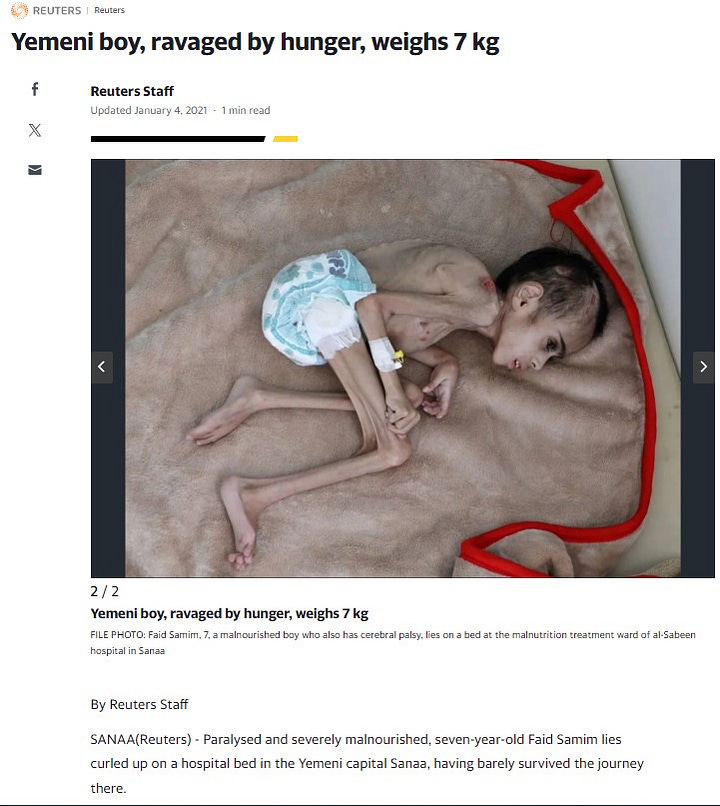
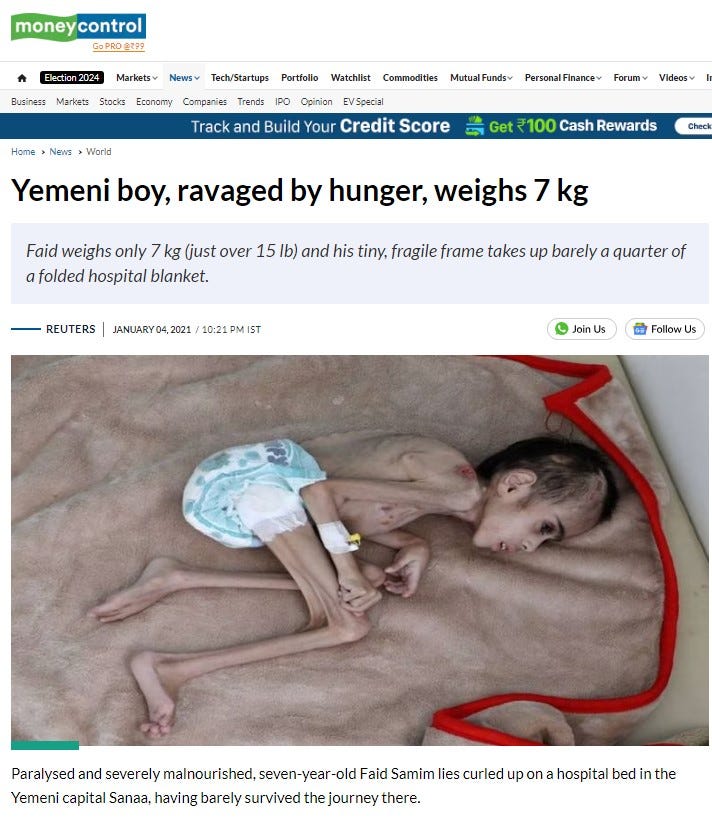
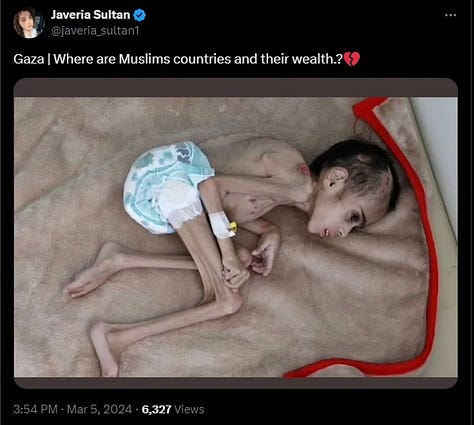
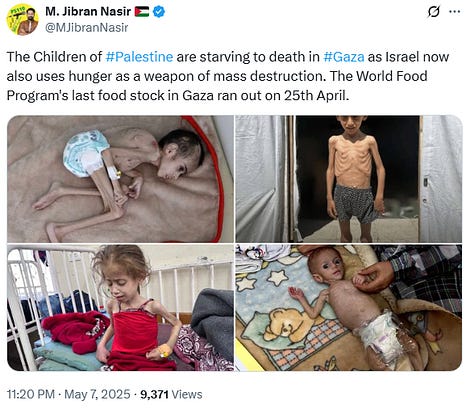
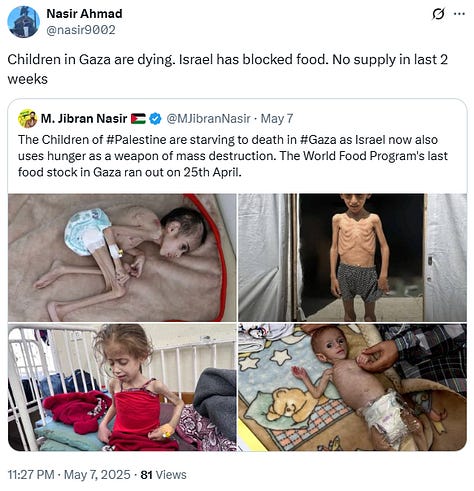
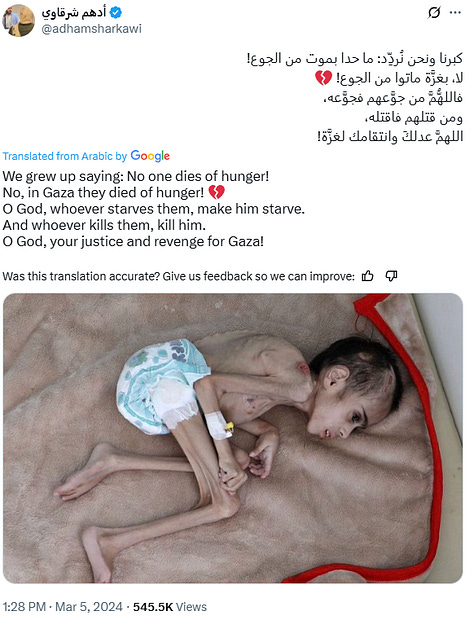
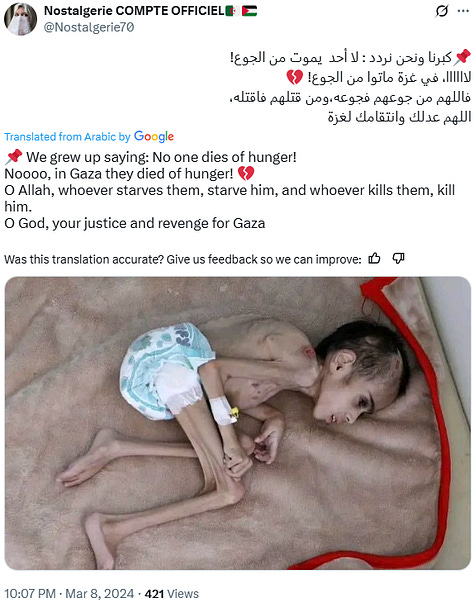
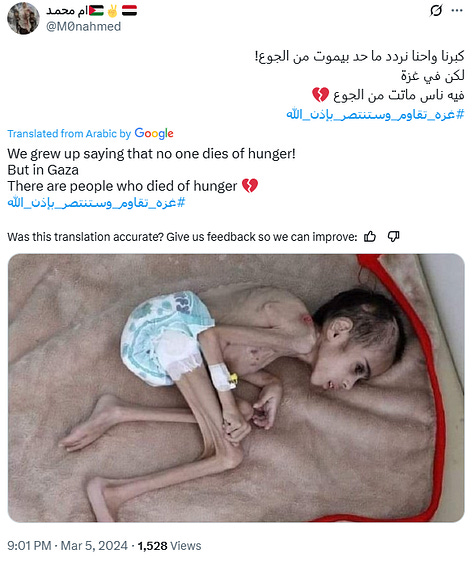
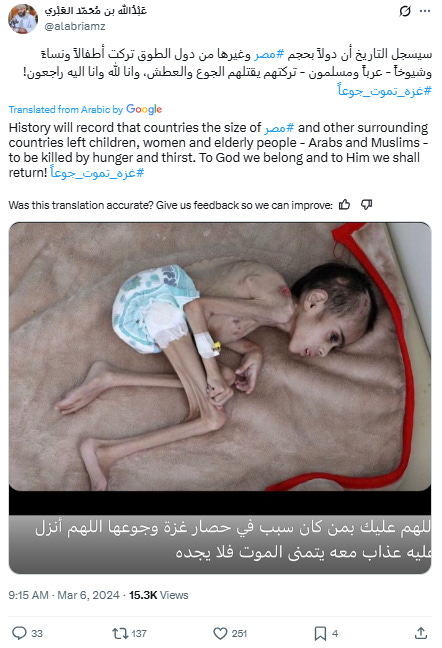
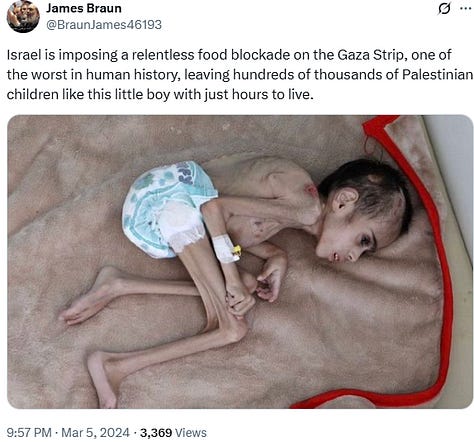
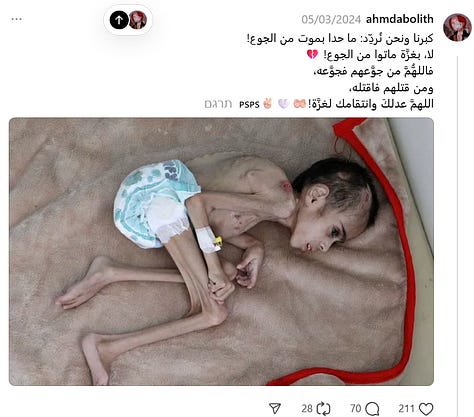
Yemen: Imaged shared by many infielders Hamas boot Sulaiman Ahmed
Mummies at the Mint House Museum in Potosí, Bolivia.
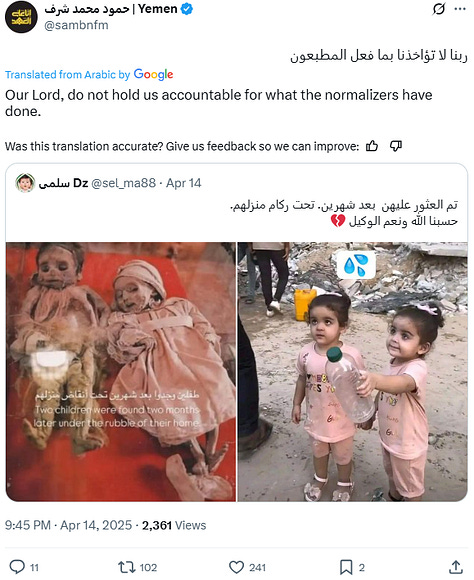
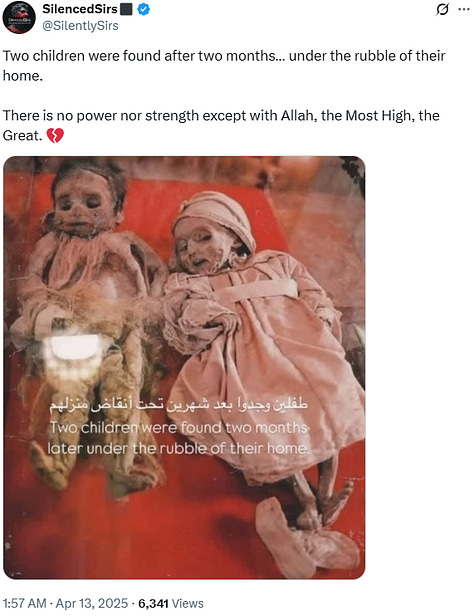
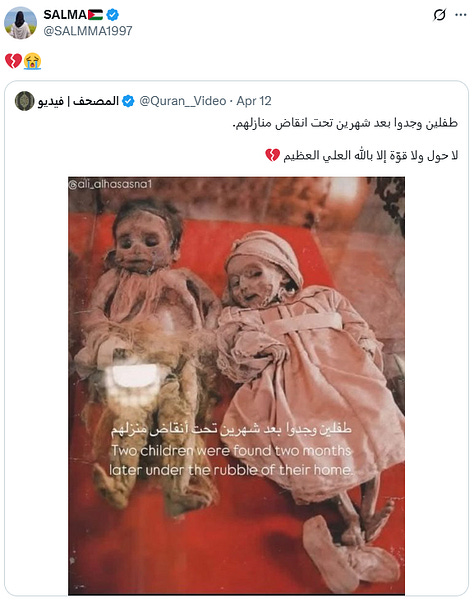
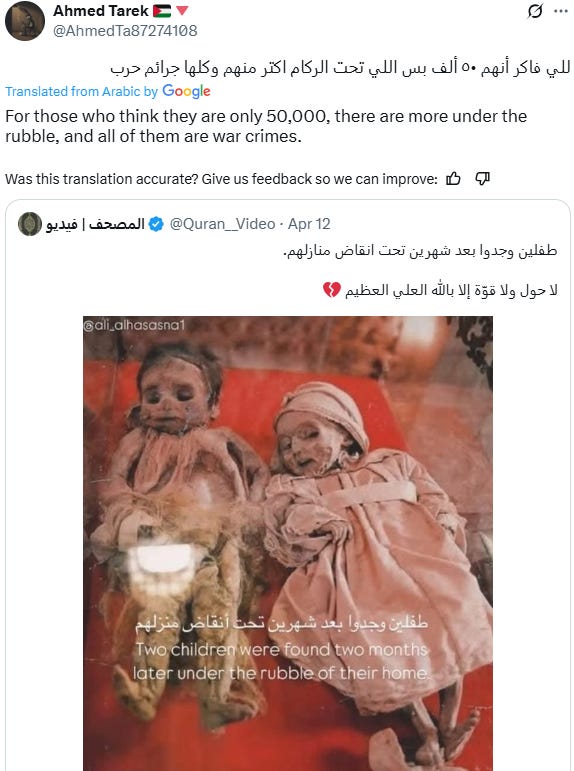
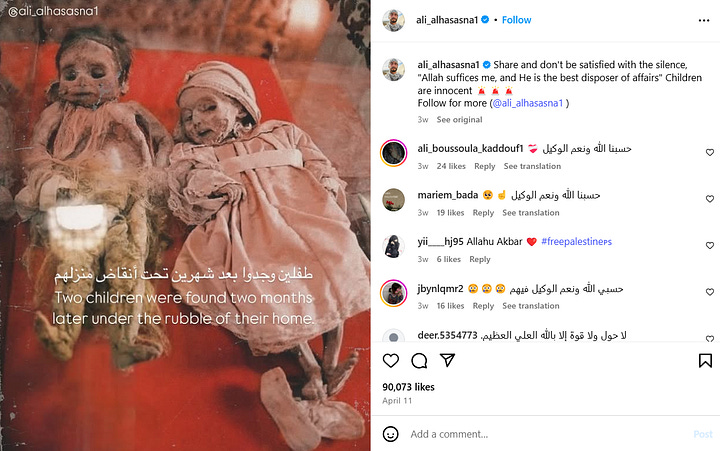
Children from Syria
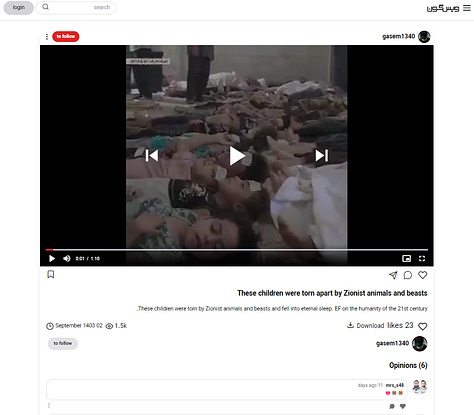
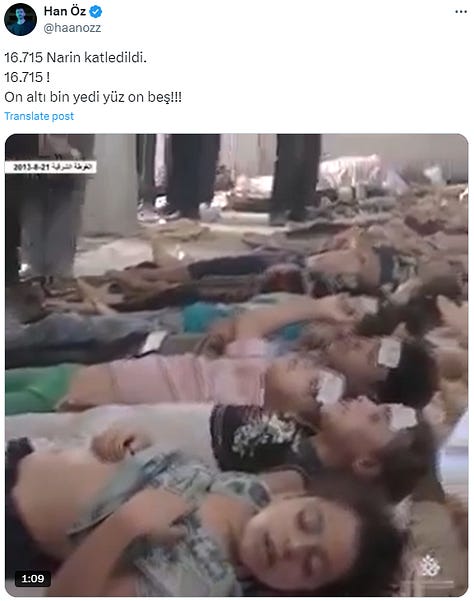
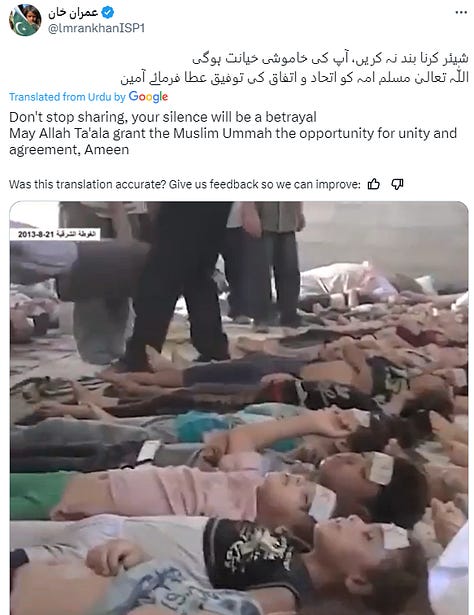
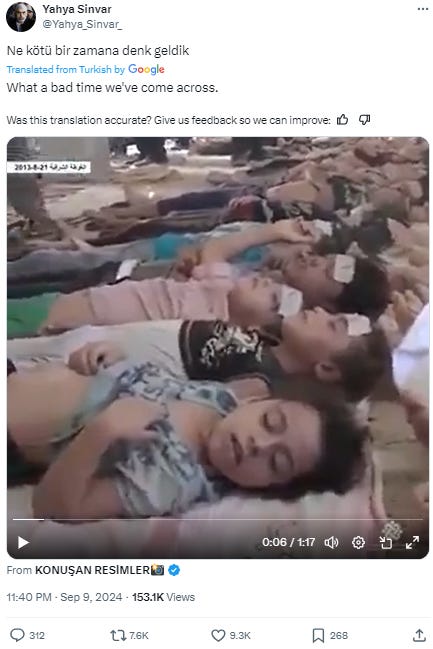
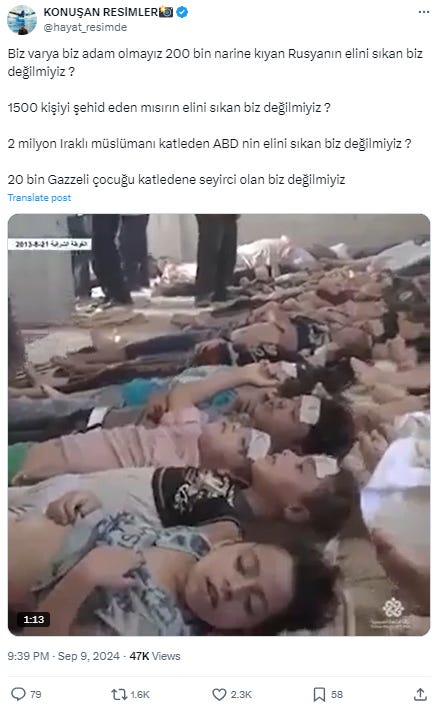
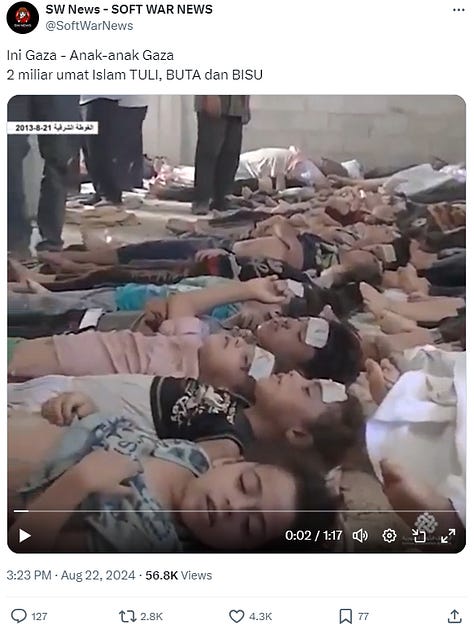
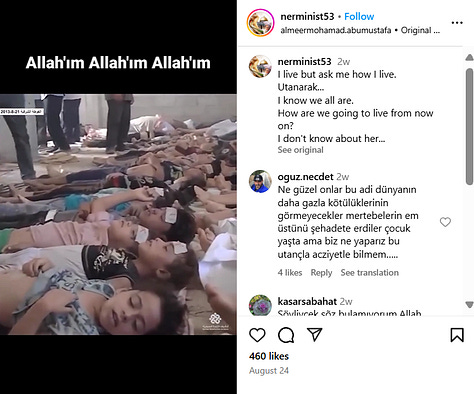
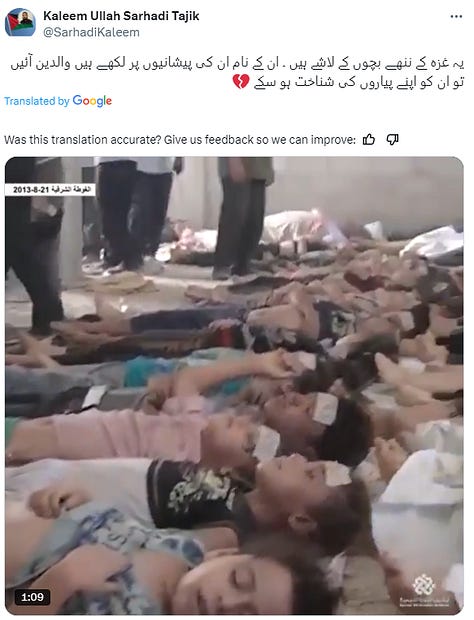
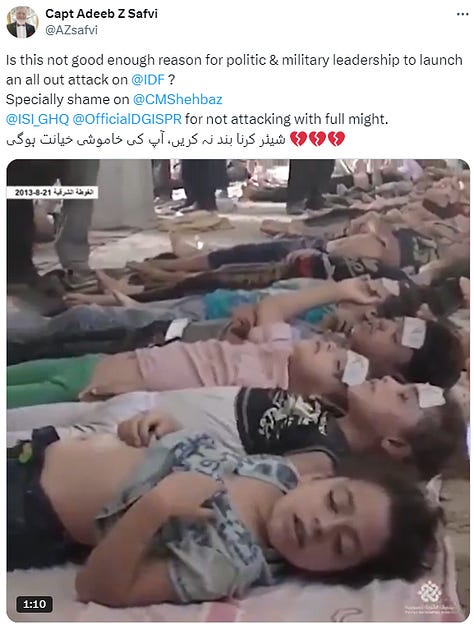
There are thousands of images like these—and they’re all fake. If there really were a genocide, you wouldn’t need a Photoshop department and rented grief, would you? I’ve got the lot and I’ll roll them out in a series of videos and posts—there isn’t room here. It’s grim work; my heart genuinely aches wading through it. But it’s my duty—as a human being and, yes, a non-Jew—to help the Jewish nation fight demonisation and the old blood libel.
Burned Victims and Fire Propaganda
Hunger isn’t Pallywood’s only genre—fire dramas are a favourite. An intelligence brief on Gazawood’s “burned victims” flags staged or exaggerated scenes after Israeli strikes.
Oct 2024, Al-Aqsa Martyrs Hospital: a man “engulfed in flames” stays eerily calm while bystanders film instead of dousing; a conveniently present influencer captures the moment. Gazawood experts say the composure suggests stunt gear or prior incapacitation.
Apr 2025, near Nasser Hospital (Khan Yunis): journalist Ahmad Mansour sits upright as flames lick; no screams, no stop-drop-roll. Onlookers hover and feed the spectacle. Analysts point to “cold flame” stage effects. Israel acknowledged the strike; the aftermath looks choreographed.
The playbook is familiar: stage a shocker, film it from every angle, blast it worldwide, let friendly outlets suspend disbelief. Bottom line: real suffering exists, but Hamas inflates and scripts it—just like the famine tropes of starving kids, empty pots, and heroic ambulances on endless repeat.
BBC Bias and the Manufacture of a Famine Narrative
A leaked email from a senior BBC executive editor shows how quickly the broadcaster hopped on Hamas’s PR wagon. Reporters were told the “argument over how much aid has crossed into Gaza is irrelevant,” to declare the distribution system “doesn’t work,” and to pin failure on the Gaza Humanitarian Foundation (GHF)—while skating past Hamas’s role. As Jonathan Sacerdoti noted in The Spectator, that framing buries the real story: quantities and distribution are crucial precisely because Hamas hijacks, obstructs, and resells aid.
The same memo pushed journalists to trumpet “mounting evidence” of starvation at aid centres, accept Hamas-linked figures at face value, and treat Israeli data as suspect—while omitting Hamas looting and even shootings at civilians collecting food. It also instructed staff to assert as indisputable that Israel occupies Gaza, binning the BBC’s own rules on disputed labels. And yes, the BBC has hired Hamas propagandists as reporters.
Reality check: GHF is described as tightly run—military oversight, GPS tracking, vetted teams, professional med and security staff, with a reported zero-diversion rate—while the earlier UN system saw convoys looted with losses up to 90%. Yet the memo flipped it: UN “worked,” GHF “failed.” That isn’t impartiality; it’s a script.
Because of legacy media’s actions, many activists and celebrities are parroting Hamas propaganda.
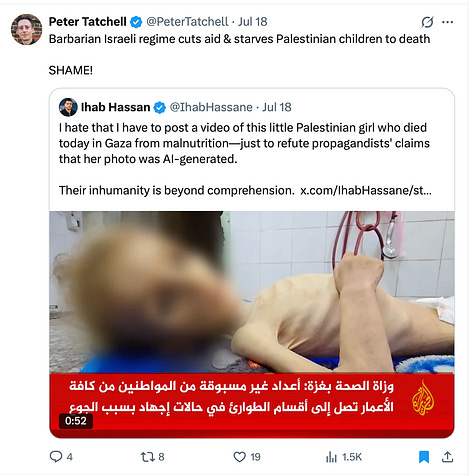
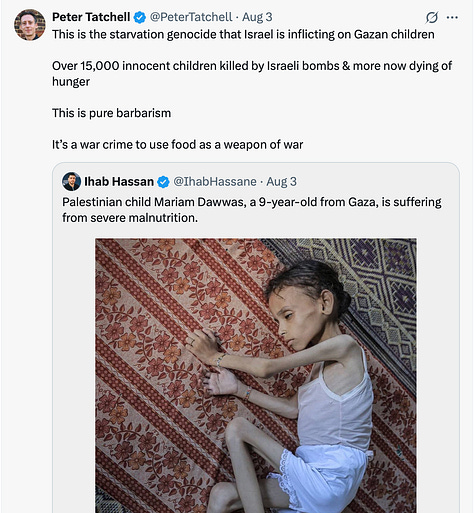
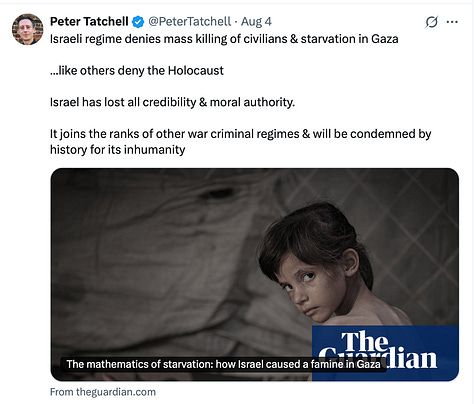
The Viral Famine Photo: David Collier’s Investigation
At the heart of the latest manufactured famine drama lies a single heart- wrenching image: Mohammed, a skeletal Gazan child, held by his visibly distressed mother. The photo, snapped by Ahmed Jihad Ibrahim Al-Arini and conveniently licensed to Anadolu—Turkey’s state-run news agency—was unleashed onto Instagram on 22 July 2025. But as David Collier’s sharp-eyed investigation reveals, similar pictures were already floating around. Another Gazan social media user, Saeed Mohammed, uploaded nearly identical images even earlier, neatly demolishing claims that Mohammed’s photo was some spontaneous journalistic scoop.
Naturally, Western media went berserk. Within hours, Mohammed’s cropped, harrowing portrait appeared plastered across major outlets—Sky News, CNN, The Guardian, Daily Mail, New York Times, The Times—and the Daily Express even splashed his face on their front page on 23 July, each echoing the same gloomy refrain: Gaza is starving, and it's Israel’s fault. No nuance, no scepticism—just pure, unfiltered narrative.
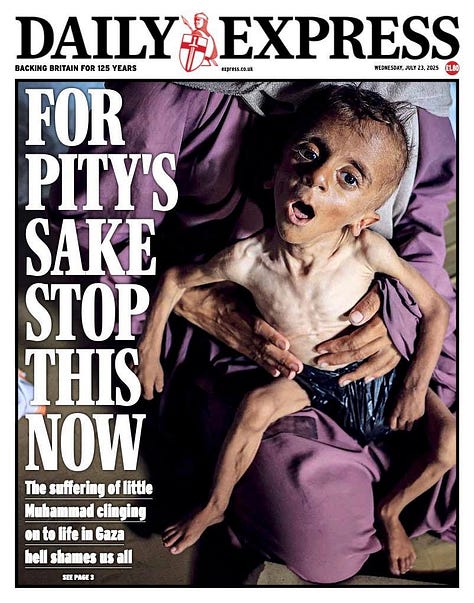
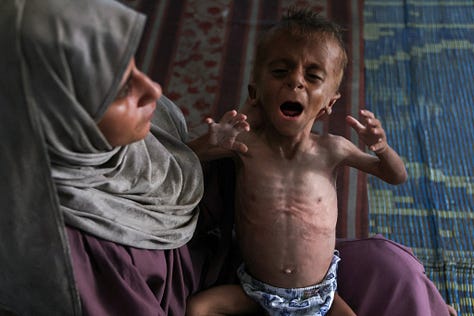
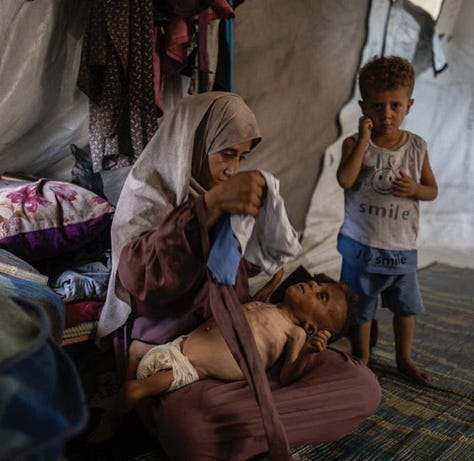
But Collier, apparently one of the only people left willing to do some actual journalism, unearthed the bigger picture—literally. He found unpublished photographs showing Mohammed’s older brother, Joud (born 18 April 2022), standing nearby, perfectly healthy and decidedly well-fed. The mainstream media’s conveniently cropped version blurred Joud into oblivion or cut him out completely, obscuring clear evidence that this family wasn’t starving. The reason behind Mohammed’s heartbreaking thinness, it turns out, was something far more complex and medically tragic: he suffers from serious genetic disorders. Collier located a medical report from Gaza’s Basma Association for Relief, signed by Dr Saeed Mohammed Al Nassan on 20 May 2025, clearly stating that Mohammed, born on 23 December 2023, has cerebral palsy and hypoxemia, and had required specialist nutritional supplements since birth.
In other words, Mohammed wasn’t a victim of Israeli-induced famine, but a medically vulnerable child tragically malnourished due to neurological and genetic conditions. Shockingly—or perhaps unsurprisingly—the BBC conveniently failed to mention this in their 64-second interview with Mohammed’s mother. Even when the mother herself hinted at Mohammed’s need for physiotherapy and his spinal curvature, the BBC’s narrative continued to subtly blame famine. As Collier dryly observes, this wasn't lazy journalism—it was deliberate deception, simplifying a complex medical tragedy into anti-Israel propaganda.
Collier also exposed distortions around Mohammed’s father, Zakaria Ayoub Al-Matouq. Legacy media breathlessly reported that he’d been killed “while collecting food”—a detail carefully crafted to bolster the starvation myth. Collier got hold of the death certificate, which showed that Zakaria died on 28 October 2024 amid intense combat in Jabalia, a battlefield where Hamas had directly engaged IDF forces.
Whatever the full truth about "collecting food," it’s undeniable that Hamas chose to fight in civilian neighbourhoods, placing civilians at risk. Predictably, mainstream outlets skipped this critical context entirely.
Collier laments having to do the journalists’ jobs for them, pointing out that these heart-rending images of wartime misery have become tools to fabricate a false narrative about mass starvation. Journalists strip away crucial context, brush off complex medical realities, and shamelessly weaponize a desperate mother’s plea for help. Collier rightly brands mainstream media outlets as "Hamas’ useful idiots," eagerly amplifying propaganda without so much as a fact-check.
But his investigation doesn’t stop at Mohammed. Collier digs deeper, examining the wider network propping up the famine narrative. Many viral "starving child" images involve children with severe underlying health issues, cynically exploited by Hamas. Why? Because Hamas profits politically and financially from controlling aid distribution—hence the relentless effort to discredit the efficient US–Israeli GHF initiative. Hamas consistently churns out dramatic yet unverifiable stories about massacres at aid centres—remarkably absent of credible video evidence despite Gaza being one of the most filmed conflicts in history. Collier further highlights the disturbing complicity of certain UN agencies and NGOs operating in Gaza, heavily staffed by individuals with ties to terrorist groups. Conveniently timed statements from these agencies reinforce Hamas’s political goals, amplified by eager anti-Israel mouthpieces in legacy media. As Collier bluntly states, “the UN, UNRWA, and various NGOs aren’t prioritising Palestinian civilian safety; they’re prioritising a political agenda aligned with Hamas’s survival.”
Collier concludes with palpable frustration: the media’s collective failure to challenge Hamas’s lies isn’t just bad journalism—it’s a moral disgrace. "Why," he asks, "are almost all of them functioning as Hamas’ useful idiots?" He ends by appealing for support to continue his independent research—because someone, somewhere, apparently still needs to do the media’s bloody job for them.
HonestReporting’s Corroboration
HonestReporting—another standout doing actual journalism—backs Collier’s findings to the hilt. In a sharp exposé delightfully titled Another Photo. Another Lie., they highlight the viral Mohammed image snapped by a photographer employed by Turkey’s government-run Anadolu agency. Within moments, mainstream media outlets including the Daily Express, Guardian, and, inevitably, our old friend the BBC, rushed to interview the photographer and brandished the picture as undeniable evidence of Israel’s supposed plot to starve Gaza.
In an interview summarised by HonestReporting, Mohammed’s own mother explicitly explained her son’s muscle disorder, his need for continuous therapy, and specialised nutrition—pointedly clarifying that Mohammed was not a victim of starvation but rather a chronically ill child in desperate need of medical care. The group emphasized that yes, Gaza is suffering, but the blame sits squarely at Hamas’s doorstep—after all, they initiated and prolonged the conflict, refusing ceasefires and keeping hostages. The UN doesn’t exactly cover itself in glory here either: hundreds of aid trucks lined up at the border have literally gone nowhere because the UN failed spectacularly at distributing supplies. As HonestReporting bluntly remarks, Western media happily latch onto any unverified image or claim if it slots neatly into their anti-Israel narrative. Their report urges media outlets to publicly correct their stories and acknowledge
Mohammed’s medical condition rather than peddle politically convenient myths about famine.
Another HonestReporting piece, the aptly titled Hungry for Truth: Media, Propaganda, and the Misguided Starvation in Gaza, provides even broader context. It rightly begins by acknowledging that food insecurity, no matter its cause, is tragic—but firmly reminds readers of a few uncomfortable truths: Hamas actively exploits civilians to heighten crises, misleads the world into blaming Israel, and international media willingly swallow it hook, line, and sinker. Claims of mass starvation in Gaza regularly come straight from Hamas press releases without the slightest nod toward basic journalistic fact-checking. The UN, meanwhile, refuses cooperation with Israel and the GHF initiative precisely because that would bypass Hamas’s grubby hands—leaving Hamas-controlled media free to flood global headlines with images of skeletal children.
HonestReporting also draws attention to damning video evidence: Hamas terrorists feasting comfortably in their underground tunnels while civilians and Israeli hostages above go hungry. Simultaneously, a jaw-dropping 950 truckloads of UN aid were left rotting near Gaza’s Kerem Shalom crossing because the UN inexplicably failed to collect them. Only after this embarrassment became public knowledge did UN agencies begin grudgingly retrieving some supplies, and even then, roughly 400 trucks still sat untouched. According to documents from the World Food Programme, Israel offers unlimited trucking capacity to deliver aid—as long as Gaza has the infrastructure to actually receive it. But the UN regularly whines about how dangerous driving aid through Gaza is, how asking locals to come to aid centres is inhumane, or how air-drops wouldn’t suffice. In other words, any practical solution that cuts Hamas out of the picture is dismissed by the UN as ineffective, immoral, or both.
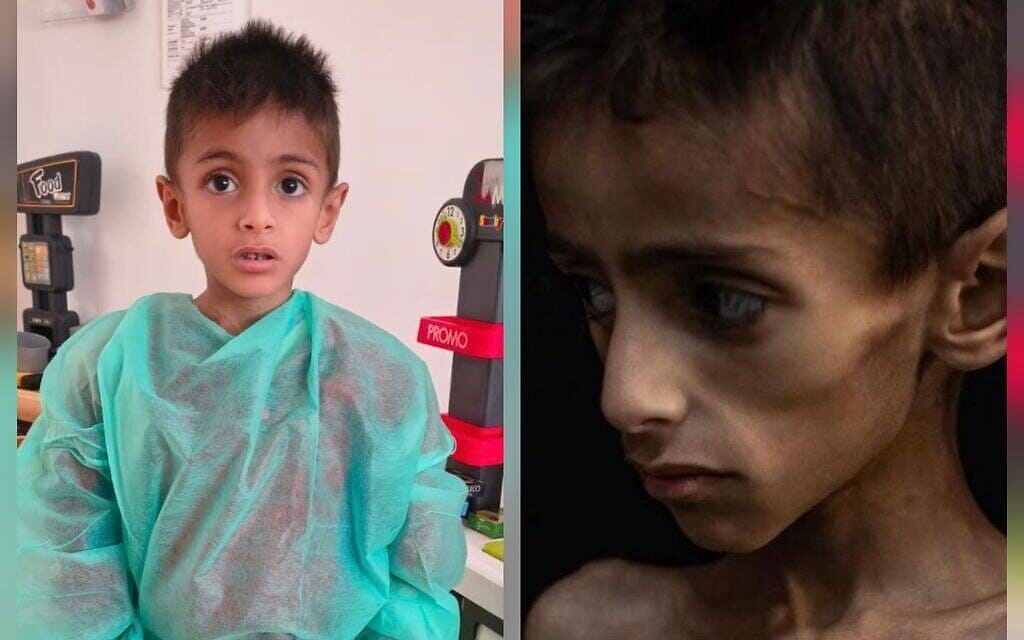
HonestReporting’s verdict is clear: Gaza’s humanitarian crisis is real, but it's cynically manipulated by Hamas—and shamefully amplified by international media who happily trade journalism for narrative convenience.
Patterns of Manipulation
After sifting through all this investigative heavy lifting, one thing becomes obnoxiously clear: Hamas’s propaganda has a remarkably predictable playbook.
To spare your scrolling thumb, here’s a snappy summary of the usual tricks, fresh from my findings:
Conclusion
Let’s be clear: Gaza’s hunger narrative isn’t just a straightforward tale of starving civilians enduring a cruel siege. Hamas has turned suffering into a twisted art form—staging hunger scenes, exploiting ill children, recycling footage, and coordinating narratives with conveniently sympathetic media. Meanwhile, trusted organisations like the BBC appear to have tossed impartiality aside, actively instructing their reporters to ignore evidence that undermines their preferred anti-Israel storyline. The UN, whose job description presumably includes delivering aid rather than playing politics, imposes nonsensical conditions that result in hundreds of aid trucks rotting at crossings—then shamelessly blames Israel for shortages.
The end result is an absurd information ecosystem where a single dishonest photograph sparks global outrage, while the actual truth sits buried in footnotes.
None of this denies genuine hardship exists in Gaza; war inevitably brings suffering. But deliberately twisting isolated tragedies into evidence of systematic starvation by Israel isn’t just sloppy journalism—it’s morally disgraceful. David Collier rightly points out it shouldn’t fall on independent researchers to call out this nonsense. Yet until major news outlets rediscover the art of fact-checking and regain a basic sense of integrity, exposing these lies will continue to rely on citizen journalists, independent analysts, and organisations like HonestReporting.
So next time you spot another breathless headline screaming famine and suffering in Gaza, treat it with healthy scepticism—and demand accountability from media outlets more interested in selling narratives than uncovering the truth.


